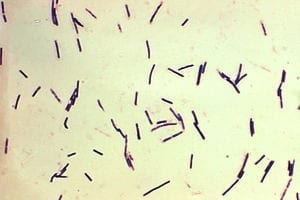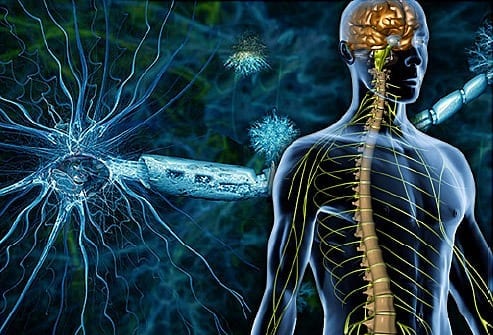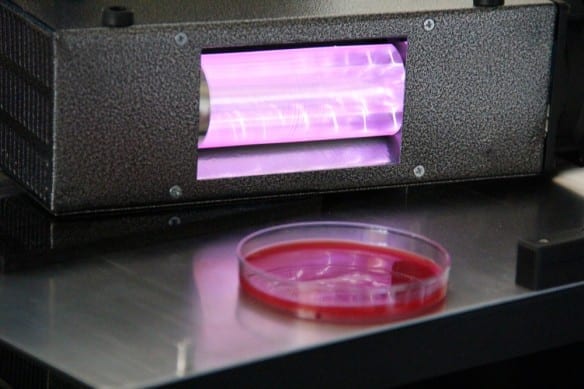VARIANT OF COMMON SOIL-BASED PATHOGEN FOUND FOR THE FIRST TIME IN A PATIENT WITH MS
RESEARCHERS FIND EVIDENCE OF SIMILAR INFECTION IN OTHER MS PATIENTS
A research team from Weill Cornell Medical College and The Rockefeller University has identified a bacterium it believes may trigger multiple sclerosis (MS), a chronic, debilitating disorder that damages myelin forming cells in the brain and spinal cord.
Their study, published in PLoS ONE, is the first to identify the bacterium, Clostridium (C.) perfringens type B, in humans.
The scientists say their study is small and must be expanded before a definitive connection between the pathogen and MS can be made, but they also say their findings are so intriguing that they have already begun to work on new treatments for the disease.
“This bacterium produces a toxin that we normally think humans never encounter. That we identified this bacterium in a human is important enough, but the fact that it is present in MS patients is truly significant because the toxin targets the exact tissues damaged during the acute MS disease process,” say the study’s first author, K. Rashid Rumah, an MD/PhD student at Weill Cornell Medical College, and the study’s senior investigator,Dr. Timothy Vartanian, professor of neurology and neuroscience at Weill Cornell Medical College and director of the Judith Jaffe Multiple Sclerosis Center at New York-Presbyterian Hospital/Weill Cornell Medical Center.
“While it is clear that new MS disease activity requires an environmental trigger, the identity of this trigger has eluded the MS scientific community for decades,” Dr. Vartanian says. “Work is underway to test our hypothesis that the environmental trigger for MS lays within the microbiome, the ecosystem of bacteria that populates the gastrointestinal tract and other body habitats of MS patients.”
CONNECTION TO MS IN GRAZING ANIMALS
The study describes discovery of C. perfringens type B in a 21-year-old woman who was experiencing a flare-up of her MS.
The woman was part of the Harboring the Initial Trigger for MS (HITMS) observational trial launched by Dr. Vartanian and K. Rashid Rumah, who works both with Dr. Vartanian and with co-author Dr. Vincent Fischetti at The Rockefeller University.
C. perfringens, found in soil, is one of the most common bacteria in the world. It is divided into five types. C. perfringens type A is commonly found in the human gastrointestinal tract and is believed to be largely harmless.
C. perfringens types B and D carry a gene (epsilon toxin) that emits a protoxin — a non-active precursor form of the toxin — which is turned into the potent “epsilon” toxin within the intestines of grazing animals. The epsilon toxin travels through the blood to the brain, where it damages brain blood vessels and myelin, the insulation protecting neurons, resulting in MS-like symptoms in the animals. While the D subtype has only been found in two people, based on prior studies by other investigators, the B subtype had never been found in humans.
Nevertheless, Rumah and the research team set out to see if subtypes B or D exist in humans and if they are associated with MS. They tested banked blood and spinal fluid from both MS patients and healthy controls for antibody reactivity to the epsilon toxin. Investigators found that levels of epsilon toxin antibodies in MS patients were 10 times higher than in the healthy controls — the blood of only one out of 100 control participants showed an immune reaction to the toxin.
The team also examined stool samples from both MS patients and healthy controls enrolled in the HITMS clinical study, and found that 52 percent of healthy controls carried the A subtype compared to 23 percent of MS patients. “This is important because it is believed that the type A bacterium competes with the other subtypes for resources, so that makes it potentially protective against being colonized by epsilon toxin secreting subtypes and developing MS,” say Rumah and Vartanian.
The search by investigators for evidence of C. perfringens type B paid off in the case of a young MS patient. Co-author Dr. Jennifer Linden, a microbiologist at Weill Cornell Medical College, isolated the actual bacterium from the patient’s stool.
A CHOICE OF APPROACHES FOR TREATMENT
The authors suspect that once a human is infected with C. perfringens type B or D, the pathogen usually lives in the gut as an endospore, a seed-like structure that allows some bacteria to remain dormant for long periods. “The human gastrointestinal tract is host to approximately 1,000 different bacterial species, but is not a hospitable environment for C. perfringens type B or D, so it does not grow well there. It hibernates in a protective spore. When it does grow, we anticipate it generates a small quantity of epsilon toxin, which travels through the blood into the brain,” Dr. Vartanian says. “We believe the bacterium’s growth is episodic, meaning the environmental trigger is always present, and it rears its ugly head from time to time.”
He says researchers do not know how humans are infected with C. perfringens type B or D, but they are studying potential routes of exposure. The scientists are also in the first stages of investigating potential treatments against the pathogen.
Go deeper with Bing News on:
Toxin-Emitting Bacteria
- Public lake sampling for algae toxin begins in Nebraska
The Nebraska Department of Environment and Energy announced Monday it has begun its weekly sampling of public lakes across the state.
- Scientists make electricity from air moisture using bacterial nanowires
Bacterial nanowires can conduct electricity and can potentially be used to devise sensing systems. However, after being harvested from bacteria, these nanowires are hard to modify and, therefore, have ...
- What is E. coli? What to know about bacteria tied to recalls of ground beef, walnuts
coli is actually a group of bacteria that are found all over the environment ... coli that may make us sick, the Centers for Disease Control and Prevention, says: Shiga toxin-producing E. coli (STEC), ...
- Multifaceted Interactions of Bacterial Toxins With the Gastrointestinal Mucosa
A: Animal; ACE: Accessory cholera enterotoxin; H: Human; ZOT: Zonula occludens toxin.
- South Memphis residents celebrate closure of toxic facility
A commercial sterilization warehouse has been operational for almost 50 years, during which residents and health experts charge it released a toxin called ethylene oxide 24 hours daily.
Go deeper with Google Headlines on:
Toxin-Emitting Bacteria
[google_news title=”” keyword=”Toxin-Emitting Bacteria” num_posts=”5″ blurb_length=”0″ show_thumb=”left”]
Go deeper with Bing News on:
C. perfringens type B
- Multifaceted Interactions of Bacterial Toxins With the Gastrointestinal Mucosa
Toxins that are absorbed from the intestine and diffuse through the blood circulation are responsible for multiorgan failure (C. perfringens ɛ-enterotoxemia), specific neurological diseases ...
- Sony launches new CFexpress Type B cards
Sony has announced two new CFexpress Type B cards, with faster performance than the company's first generation of medium-capacity Type B cards. The new CEB-G480T and CEB-G240T memory cards are ...
- Type-C
In the six months that have passed after the last USB-C article has been released, I have thought up a bunch of ways that these articles could have been improved. It’s, of course, normal to have ...
- Type A and Type B Personality Theory
Type B personality was conceived as a less-intense personality type. A “Type C” was later proposed as a predictor of cancer risk. There is now ample reason to doubt that these supposed ...
- Multifaceted Interactions of Bacterial Toxins With the Gastrointestinal Mucosa
STa was the first ligand found to bind GC–C, and later studies demonstrated ... [13] Clostridium perfringens enterotoxin (CPE) is a 319-amino acid protein (35.5 kDa), which is synthesized ...
Go deeper with Google Headlines on:
C. perfringens type B
[google_news title=”” keyword=”C. perfringens type B” num_posts=”5″ blurb_length=”0″ show_thumb=”left”]











